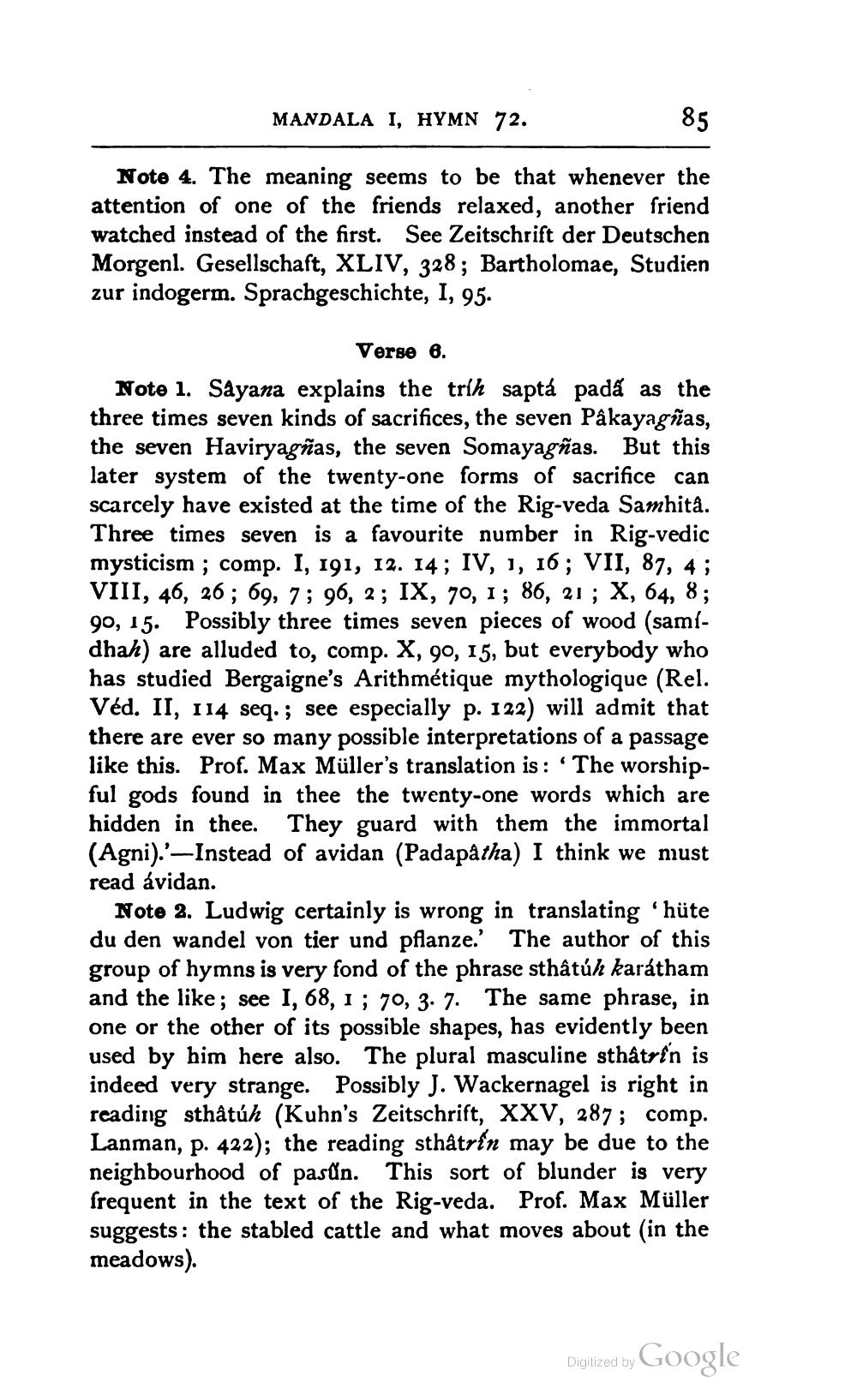________________
MANDALA I, HYMN 72.
85
Note 4. The meaning seems to be that whenever the attention of one of the friends relaxed, another friend watched instead of the first. See Zeitschrift der Deutschen Morgenl. Gesellschaft, XLIV, 328; Bartholomae, Studien zur indogerm. Sprachgeschichte, I, 95.
Verse 6. Note 1. Sayana explains the trih saptá padá as the three times seven kinds of sacrifices, the seven Pâkayagsas, the seven Haviryagñas, the seven Somayagñas. But this later system of the twenty-one forms of sacrifice can scarcely have existed at the time of the Rig-veda Samhitå. Three times seven is a favourite number in Rig-vedic mysticism ; comp. I, 191, 12. 14; IV, 1, 16; VII, 87, 4; VIII, 46, 26; 69, 7; 96, 2; IX, 70, 1; 86, 21; X, 64, 8; 90, 15. Possibly three times seven pieces of wood (samidhah) are alluded to, comp. X, 90, 15, but everybody who has studied Bergaigne's Arithmétique mythologique (Rel. Véd. II, 114 seq. ; see especially p. 122) will admit that there are ever so many possible interpretations of a passage like this. Prof. Max Müller's translation is : The worshipful gods found in thee the twenty-one words which are hidden in thee. They guard with them the immortal (Agni).'—Instead of avidan (Padapatha) I think we must read ávidan.
Note 2. Ludwig certainly is wrong in translating 'hüte du den wandel von tier und pflanze.' The author of this group of hymns is very fond of the phrase sthâtúh karátham and the like; see 1, 68, 1 ; 70, 3. 7. The same phrase, in one or the other of its possible shapes, has evidently been used by him here also. The plural masculine sthåtrín is indeed very strange. Possibly J. Wackernagel is right in reading sthåtúh (Kuhn's Zeitschrift, XXV, 287; comp. Lanman, p. 422); the reading sthåtrên may be due to the neighbourhood of pasůn. This sort of blunder is very frequent in the text of the Rig-veda. Prof. Max Müller suggests: the stabled cattle and what moves about in the meadows)
Digitized by Google




